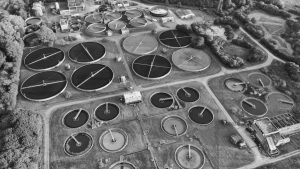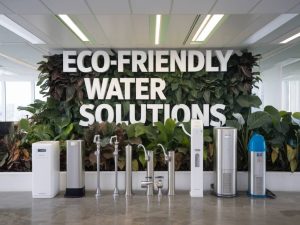how efficient water use can reduce operating costs in offices

how efficient water use can reduce operating costs in offices
« `html
The Importance of Efficient Water Use in Office Settings
Water is one of the most critical resources for any business, yet its role is often underestimated. In office environments, an efficient water management system can lead to significant reductions in operating costs. Companies that prioritize water efficiency not only save on utility expenses but also contribute towards sustainability goals. But how exactly can efficient water use reduce operating costs in offices?
Understanding the Current Landscape of Water Usage in Offices
Before diving into strategies for efficient water use, it’s essential to understand typical water consumption patterns in office settings. Offices primarily use water in restrooms, kitchens, heating and cooling systems, and occasionally in landscaping. Without proper monitoring and control, these areas can contribute to substantial water wastage.
For instance, traditional plumbing fixtures in restrooms may use more water than necessary, while leaks in HVAC systems can go unnoticed, leading to increased water bills and potential damage costs. Understanding these patterns offers a foundation upon which efficiency measures can be built.
Strategies for Efficient Water Use in Offices
Implementing water-efficient strategies in offices encompasses a variety of approaches. Here are some key strategies to consider:
- Upgrade Plumbing Fixtures: Low-flow toilets, faucets, and urinals are widely available in the market. These fixtures can significantly reduce water usage without compromising on performance. An upfront investment in such fixtures can often be recouped through lower water bills in the long run.
- Conduct Regular Maintenance: Regular inspections and maintenance of plumbing systems can help detect leaks early. Addressing leaks promptly prevents water loss and reduces the chances of water damage to office infrastructure.
- Install Smart Water Meters: Smart water meters provide real-time data and analytics on water usage. This information can be invaluable in identifying wastage and adapting consumption patterns accordingly.
- Optimize HVAC Systems: Cooling towers are a significant water use component in many office buildings. Optimizing HVAC performance by regularly cleaning systems, checking filters, and adjusting cooling parameters can lead to reduced water use.
- Adopt Landscaping Best Practices: If your office has outdoor green spaces, consider xeriscaping, which uses drought-resistant plants to minimize water usage. Employ rainwater harvesting techniques where feasible to supplement water needs.
The Financial Benefits of Water Efficiency in Offices
Beyond the obvious water bill reductions, efficient water use in offices offers several other financial advantages. Many jurisdictions offer rebates and incentives for businesses that implement water-saving measures. By taking advantage of these programs, offices can reduce overall project costs associated with efficiency upgrades.
Additionally, improved water use can lead to decreased energy costs. For example, using less hot water reduces the energy needed for water heating. The cumulative savings from water and energy reductions enhance a company’s financial health over time.
Environmental and Social Impacts
Water efficiency in offices is not only a financial consideration but an environmental and social one as well. Utilizing water efficiently helps conserve natural resources and reduces the burden on local water supplies. This positively impacts the environment by ensuring water availability for future generations.
From a social perspective, businesses that practice sustainable water use demonstrate corporate responsibility and social awareness. Employees and stakeholders are increasingly valuing sustainability, and companies characterized by responsible resource management often enjoy enhanced reputations.
Case Studies: Success Stories in Office Water Management
Examining successful case studies provides insight into the real-world application of water-efficiency measures. One such example is a leading consulting firm that implemented a comprehensive water management plan across its offices. By replacing old fixtures with high-efficiency alternatives and employing smart water metering, the firm reduced its water consumption by 30%. This translated into substantial annual savings while bolstering their sustainability credentials.
Another case involves a technology company that integrated rainwater harvesting and grey water recycling systems in its office campus. By utilizing these alternative water sources for non-potable applications, they achieved a significant reduction in municipal water use, resulting in lower operating costs.
The Role of Technology and Innovation in Water Efficiency
The integration of technology in water management holds immense potential. Innovative tools such as smart leak detectors and automated water control systems allow for proactive management of water usage in offices. With continuous advancements, these tools become more accessible and affordable for businesses.
Companies embracing technological innovation in water management often find it easier to obtain precise data, allowing for more informed decision-making. As these technologies evolve, the barriers to efficient water use continue to diminish.
Steps for Implementation and Considerations
While the benefits of efficient water use are clear, the road to implementation can be daunting. Here are some considerations for businesses looking to implement a water efficiency program:
- Conduct a Water Audit: A thorough water audit helps identify where and how water is being used. This data is crucial for understanding current consumption patterns and identifying opportunities for improvement.
- Set Realistic Goals: Establish clear and achievable water reduction targets. These targets keep efforts focused and measurable, ensuring progress towards efficiency goals.
- Engage Stakeholders: Involve employees and stakeholders early in the process. Their support and participation are vital for successful implementation and cultural adoption of new practices.
- Monitor and Adjust: Once implementations are in place, continuous monitoring and periodic adjustments ensure sustained success and adaptation to any emerging challenges.
Conclusion
Water is an invaluable commodity, and efficient usage within office settings carries numerous benefits. From reducing operating costs and boosting financial performance to enhancing sustainability and reputation, adopting efficient water practices is a strategic choice for modern businesses. By leveraging technology, setting thoughtful strategies, and accessing incentive programs, offices can successfully navigate the path towards water efficiency, reaping rewards along the way.
« `





